Detailed Explanation of the Porsche Taycan – Motor & Brake Edition
公開日:2019.12.25
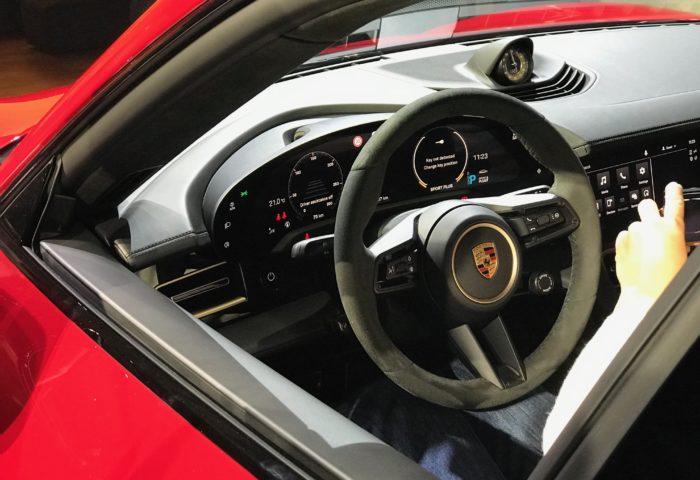
The other day, I wrote detailed reports on the Taycan preview: Exterior & Design and Interior & Cabin. This time, I’d like to share the final part of the series.
Taycan / Motor
Performance
The Taycan is undeniably a sports car, even though it’s an EV. It boasts an astonishing 0-100 km/h acceleration in 2.8 seconds, and even after more than 20 consecutive 0-200 km/h runs, the times barely drop. The Taycan Turbo S delivers a maximum output of 761 PS and peak torque of 1050 Nm.
Though it was just in a game, when I recently drove the Taycan on PS4’s “Gran Turismo SPORT,” I experienced the instant full-throttle acceleration of a gearless EV and thought, “Wow, that’s really fast!” By the way, the top speed of the Taycan Turbo S is 260 km/h.
Not only does it excel in straight-line acceleration, but as expected from Porsche, the Taycan also boasts outstanding steering performance. Because the battery is installed low in the chassis, its center of gravity is even lower than that of the 911. Adding PDCC and rear-axle steering makes it even more impressive.
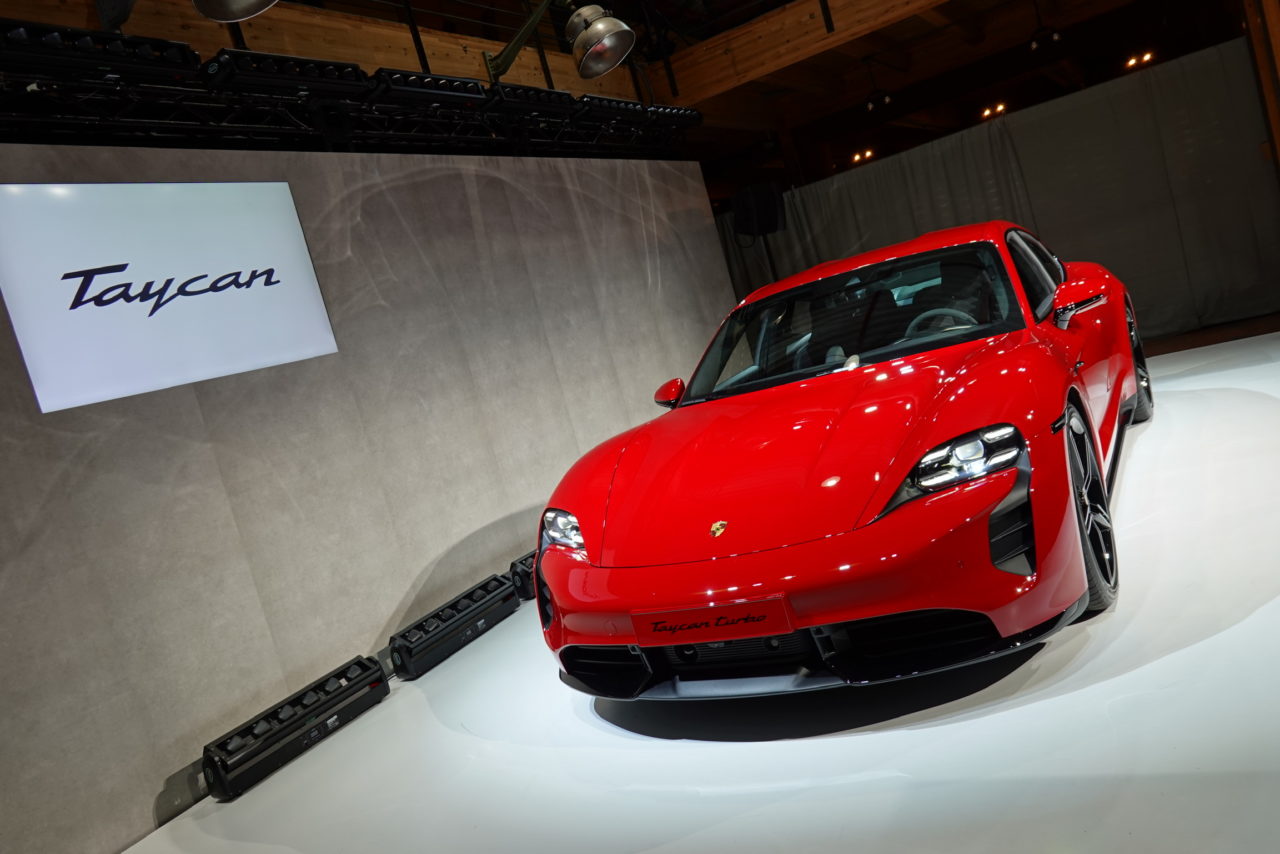
Charging
The Taycan 4S has an incredible range of 463 km. This long range means you can drive with peace of mind every day. The distance from our home in Hyogo Prefecture to Fuji Speedway is about 450 km one way, so if you drive super smoothly without using the air conditioning at all, you might just make it without charging! (Well, probably not, lol)
At 200W, it’s possible to charge up to about two-thirds overnight. That’s quite a long time for charging at this level. My husband asked Alex, “Our home parking has 100V power—would charging be difficult with that?” and Alex replied:
“It’s not impossible, but it will take longer. However, if you’re not driving daily for commuting, it shouldn’t be a problem. Energy is also recovered during braking while driving. Still, it’s definitely more convenient to have faster charging at home.”
So if we buy a Taycan, it might be best to upgrade our home parking to 200V.
Of course, the Taycan can also use public charging stations, but Porsche is rolling out rapid chargers developed in-house at authorized Porsche dealers.
Using these, you can charge enough for 100 km of driving in just 10 minutes. So you could quickly top up while popping into the dealership. I imagine as the Macan and Cayenne also go electric in the future, these rapid chargers will become common at dealers.
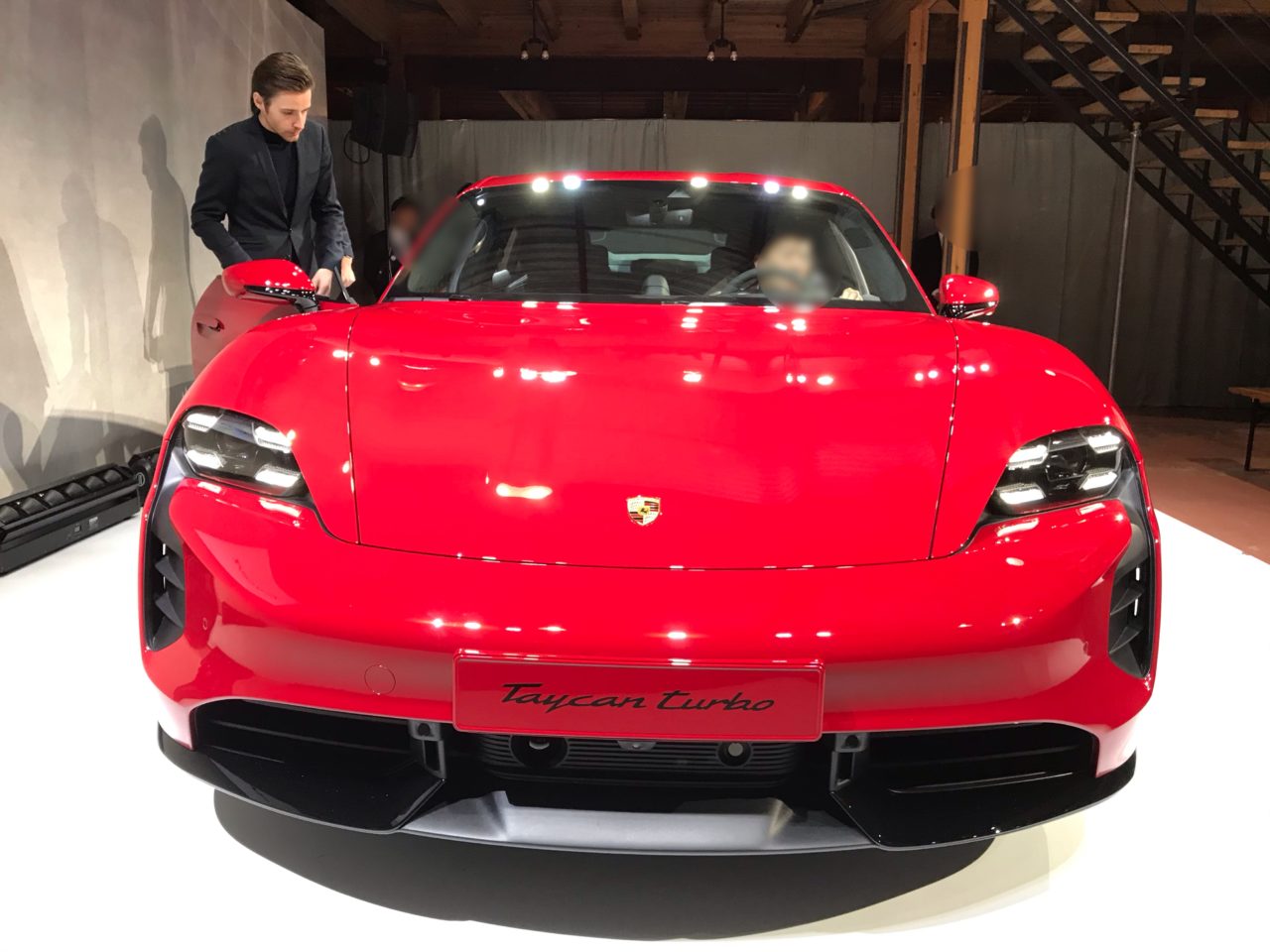
Motor Sound
With the optional Porsche Electric Sport Sound(similar to Porsche’s usual sports exhaust sound), you can enjoy a more dynamic motor sound. According to Alex, this motor sound is not fake.
They actually record the real motor sound when driving the Taycan, extract the high-frequency components, and play them through the speakers. Whether you can hear the motor sound directly proportional to how much you press the accelerator can only be confirmed by driving it, but it’s impressive that it’s not artificial.
Brakes
One particularly interesting feature of the Taycan is its brakes. Unlike regenerative braking, you must press the brake pedal for the brakes to engage—it’s not a one-pedal system, which is very Porsche-like. According to Alex:
The Taycan offers “ON, OFF, and AUTO” brake modes. In ON mode, releasing the accelerator pedal causes slight deceleration, but not as much as engine braking. OFF mode lets you drive with a normal feel. AUTO mode uses a front camera to monitor the distance to the car ahead and adjusts braking accordingly.
Also, the Taycan Turbo S comes standard with PCCB brakes.
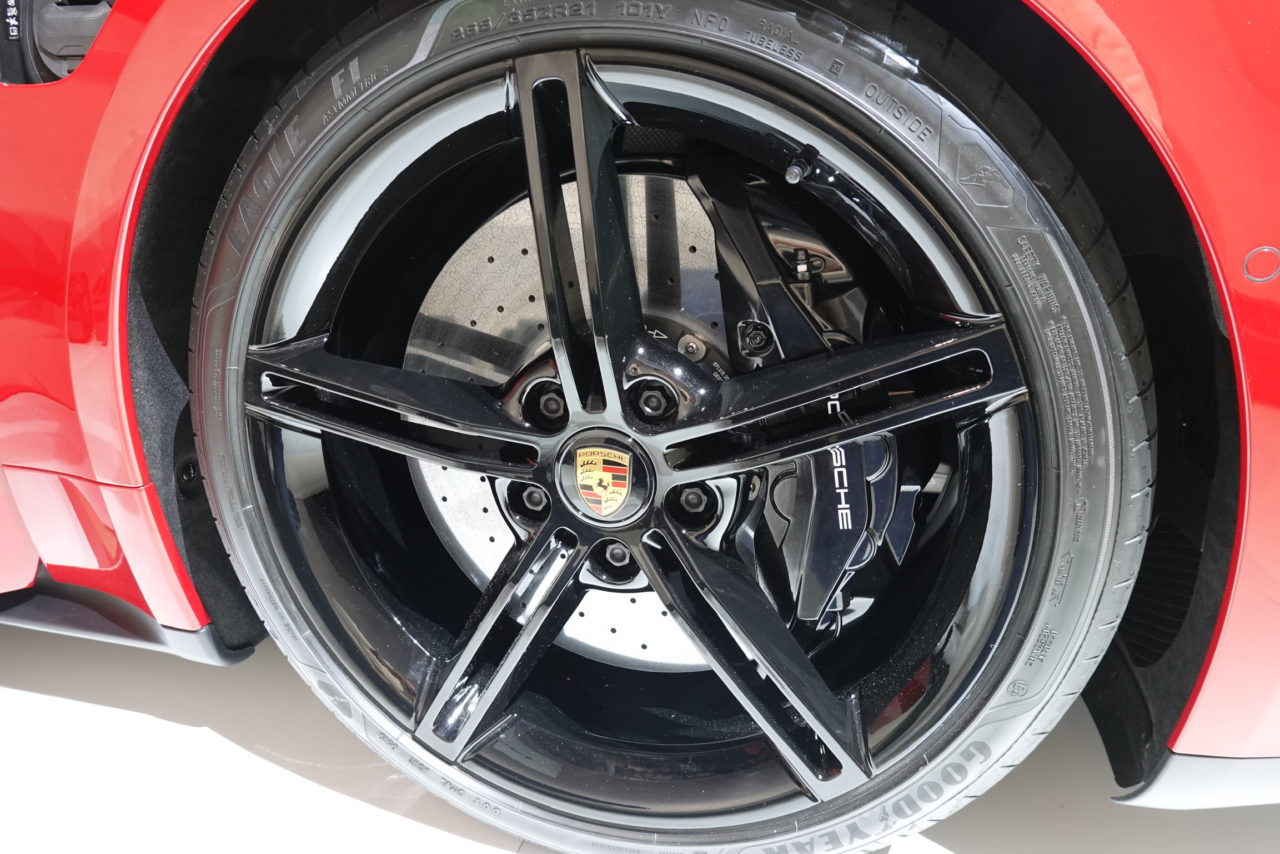
④ Taycan Pricing / Other Details
Currently, three models have been announced: Taycan 4S, Taycan Turbo, and Taycan Turbo S. Whether a base model will be released in the future is still unclear.
Price
The Japanese release price is not yet decided, so the Japanese configurator is not available. (Dealerships reportedly have configurators available) Since the Taycan sits between the Panamera and Cayenne, the price range is expected to be around there.
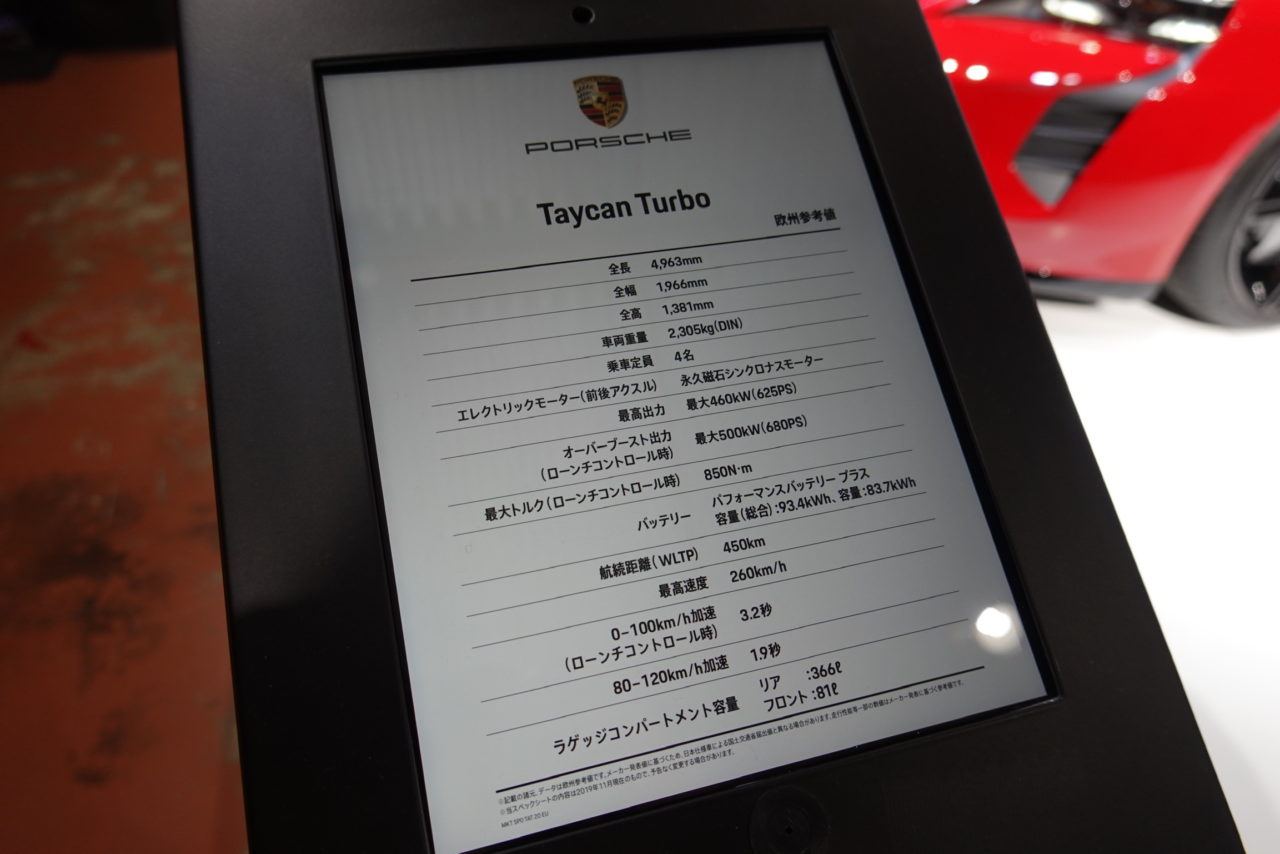
When I asked Alex about recommended models and options, he said:
“I’d want to add PDCC to the 4S. I’d like both PDCC and rear-axle steering, but if I had to choose one, it’d be PDCC. With PDCC, there’s no roll, the ride is smooth, and when you accelerate, it feels like a spaceship—there are no words to describe it (laughs). But of course, the Turbo and Turbo S are also fantastic, so I recommend those too!”
Thank you, Alex, for answering such a tough question…!
Still, the base model 4S will probably cost a fair amount, and the Turbo might be around 20 million yen. My husband said:
When I used an overseas configurator recently, the options alone added up to about 3 million yen. As I kept adding things I wanted, I thought, “Wait, if I do this, the Turbo might be better…” and then, “If I’m going to add options to the Turbo, I might as well just go for the Turbo S!” That’s how it ended up, lol.
Key / Entry
For regular Porsche models(with Porsche Entry & Drive System option):
① Carry the key and grab the door handle to unlock the door.
② Get in, insert and turn the ignition key, or for models without a key slot, turn the key part to start the engine.
③ Shift into D, release the P lever (or P releases automatically), and start driving.
But with the Taycan, starting to drive is even simpler and quicker. According to Alex:
① When you approach the car within 6 meters holding the key, the Taycan sets up. At 2 meters, the door handles automatically pop out.
② Open the door and press the start button (though it actually starts without pressing), and you’re ready to go immediately.
That’s pretty smart! Since it feels so futuristic, I wondered if the Taycan key would look futuristic too, but when I saw it…
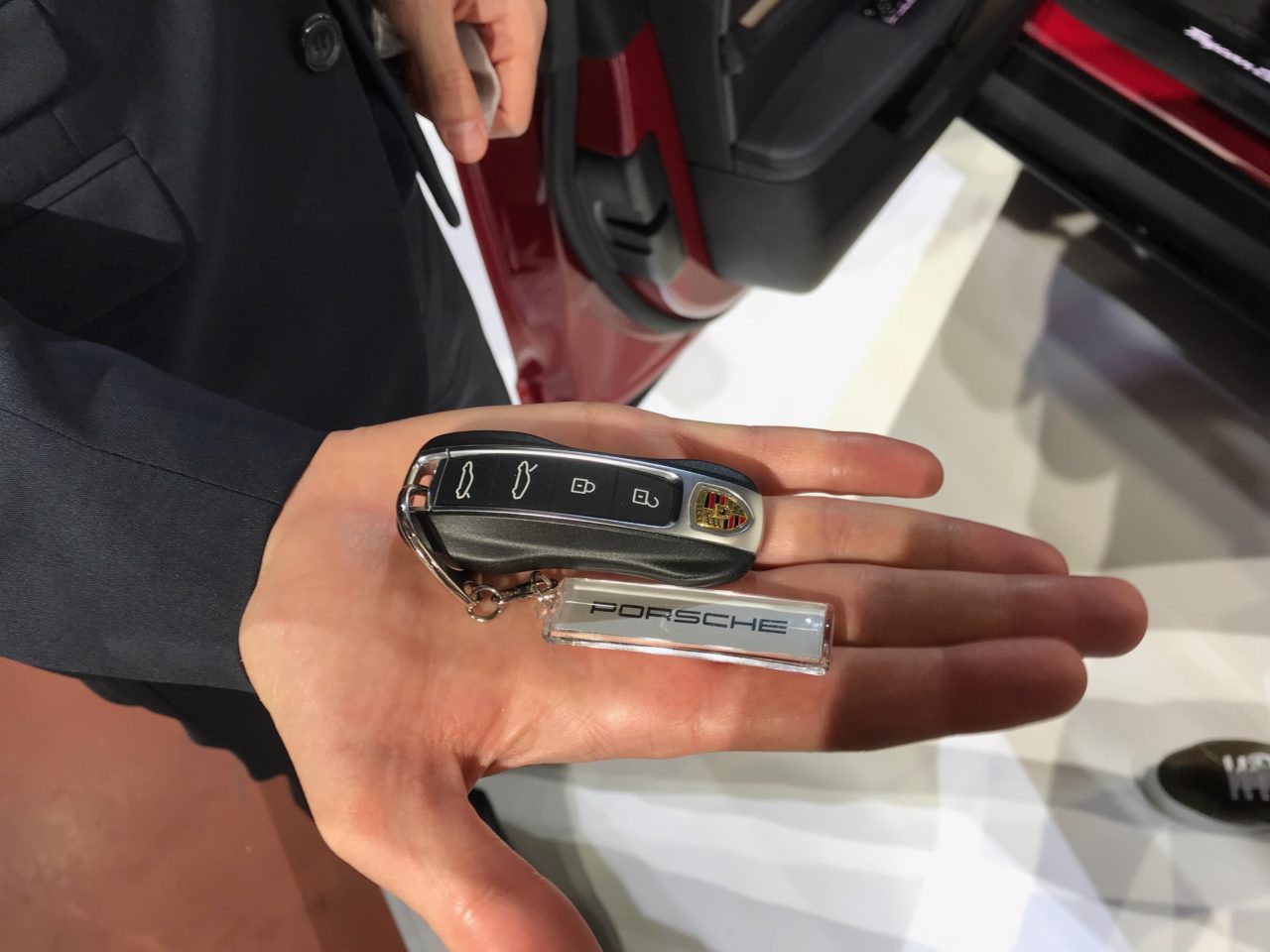
It looks totally normal (゚∀゚)!!
I couldn’t help but say, “It’s so normal!” which was a bit rude, but I was happy to see Porsche’s traditional ignition key still there.
Safety Features
The Taycan Turbo on display comes standard with ACC (Adaptive Cruise Control). The ACC camera is the left one of the two cameras on the front bumper. Incidentally, the new 911’s “Wet Mode” is not available on the Taycan.
Delivery Timing
It’s not clear yet, but reservations are being accepted. Some early production slots might see deliveries by the end of next year. So it’s safer to expect delivery the year after next.
Maintenance
I hadn’t realized this until Alex mentioned it:
Since the Taycan isn’t a gasoline engine car, there’s no need for break-in driving or oil changes (laughs). You can drive it hard from the day it’s delivered. Though I imagine the after-sales service department might have some challenges… sorry about that.
It’s quite a strange feeling that no break-in or oil changes are needed.
Taycan, Final Thoughts
After asking all my questions, Alex passionately spoke about the Taycan:
Other manufacturers often build EVs by “fitting a motor into this space” based on existing models, but Porsche designed and developed the Taycan completely from scratch. They made it without compromise, putting their soul and pride as a sports car maker into it.
That’s why we can confidently say, the Taycan is undeniably a sports car, even though it’s an EV.
Also, the Taycan’s design is truly amazing. When I recently drove it through a town in Spain, people stopped and stared, taking photos and saying, “What’s that car?!” I was really surprised by all the attention.
When I drove the same route in a 911 last year, nobody even looked (laughs).
So I think in Japan, too, the Taycan will definitely turn heads. It looks incredibly cool on the street.
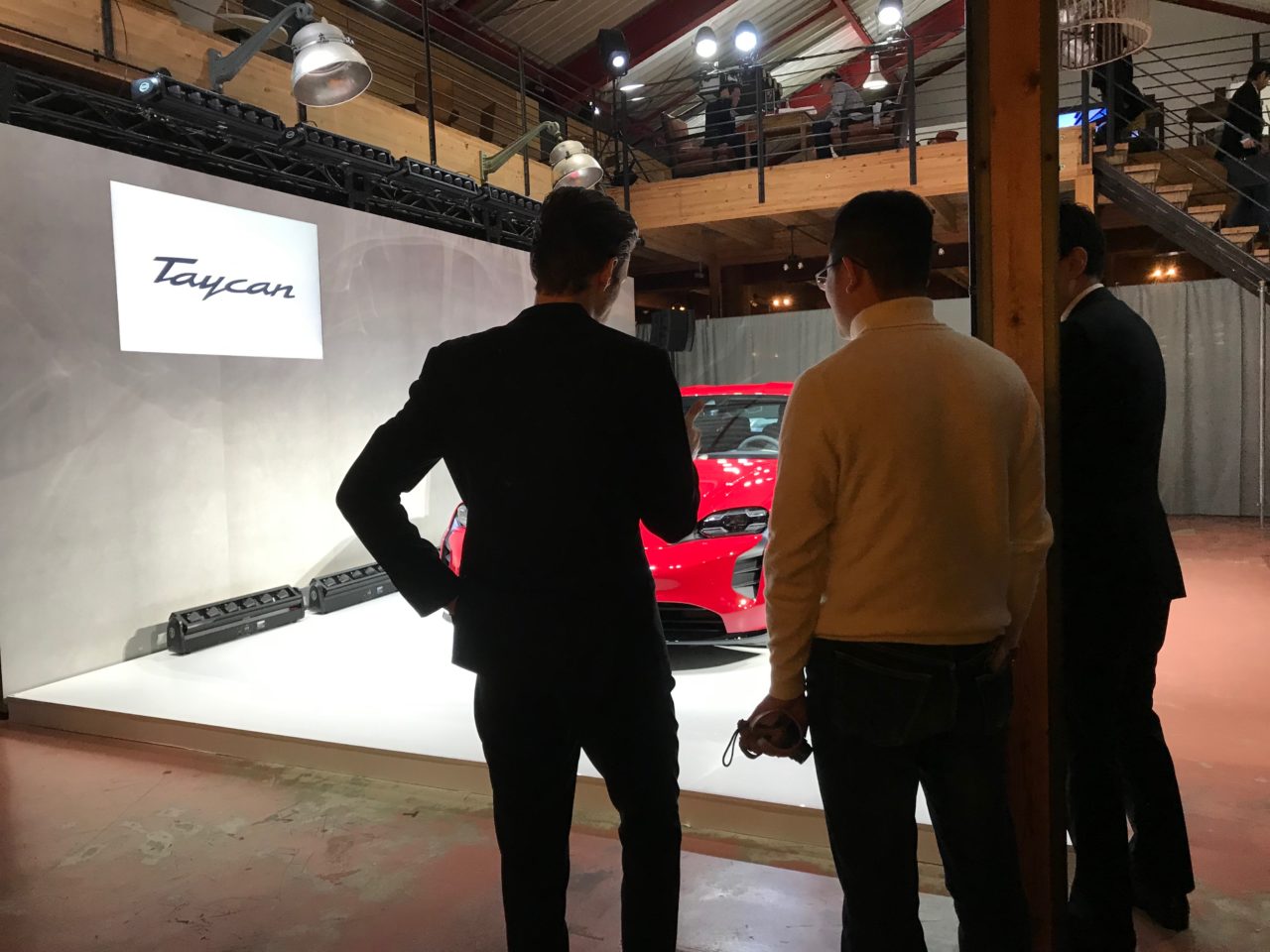
I’m an amateur, so I don’t understand all the details, but as a Porsche fan, I could feel Porsche’s soul deeply embedded in the Taycan during this preview, and I was moved.
Thank you very much to H-san and Alex for the opportunity!
このブログが気に入ったらフォローしてね!


Comment ( 0 )
Trackbacks are closed.
No comments yet.